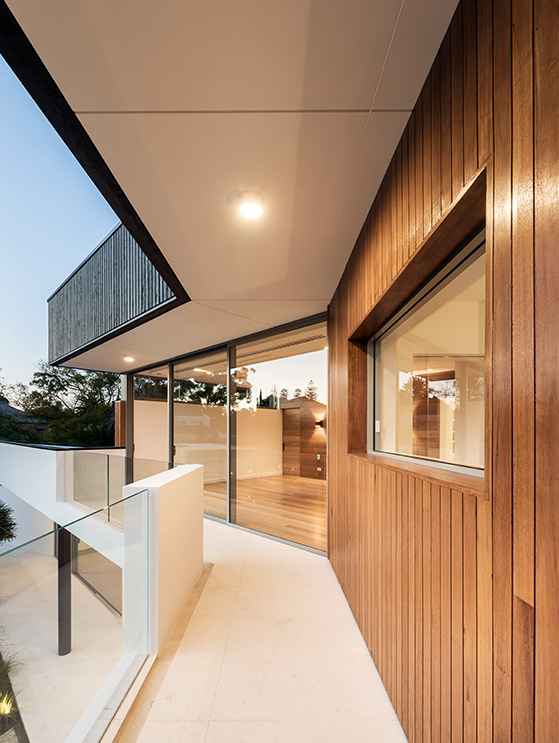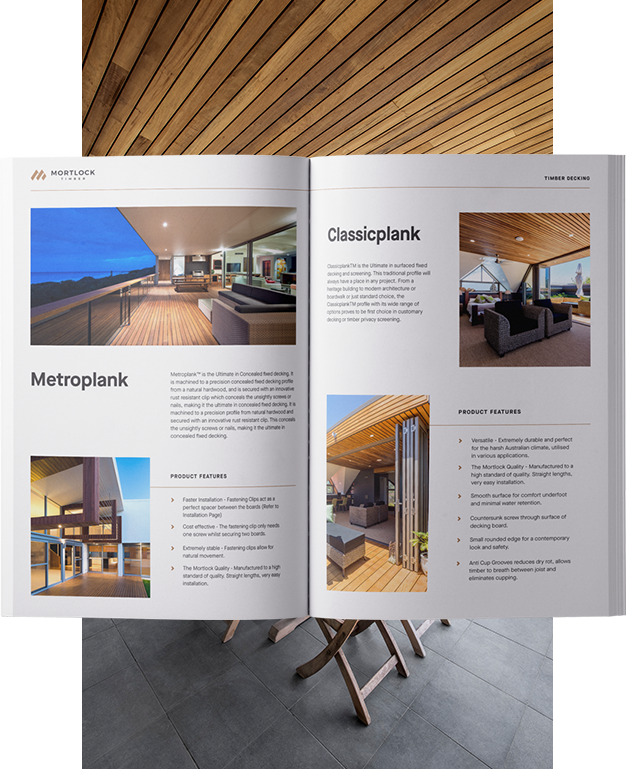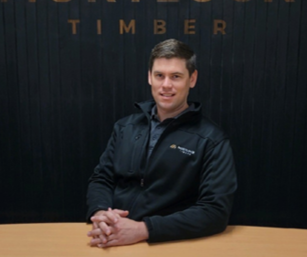Why is wood a good insulator? | The ideal solution to the Australian climate

Ever wondered how humans evolved to live through brutally cold winters and scorching hot summers?
In many cases, we have one material to thank: that’s wood.
Wood is a highly versatile and sustainable building material that has been used for centuries. And its ability to insulate homes and buildings makes it an ideal solution for regulating the typically extreme temperatures found across Australia. But why is wood a good insulator?
In this blog, we look at how wood and exterior timber cladding products can help protect against the Australian heat. We’ll also compare it to other exterior insulating materials like brick, concrete, and steel.
If you want to learn about how we supply quality, sustainable timber, simply get in touch with our team.
Why is wood a good insulator?
One of the reasons that timber is such an effective insulation material is its cellular structure. Timber is made up of tiny air pockets that trap air and slow down the transfer of heat – thereby reducing thermal conductivity. That’s what gives wood its low thermal diffusivity score – compared to other building materials. But more on that later.
Thermal diffusivity provides a scientific measure of how effective a given material is at preventing heat from penetrating through. The lower the score, the better it is at helping to keep the internal temperature of the building more stable. Timber species with low thermal diffusivity scores and low thermal conductivity are ideal for use in hot climates, such as Australia, where high temperatures are common.
Timber regulates moisture
Another factor that contributes to the heat-insulating properties of timber is its ability to absorb and release moisture. Timber is by nature, hygroscopic, meaning that it can absorb and release moisture depending on the surrounding environment. This helps to regulate the internal humidity levels of a building, which can significantly impact how you experience temperatures in a room.
When the air inside a building is too dry, it can feel much hotter than it actually is, making it uncomfortable to live or work in. By regulating the internal humidity levels, timber cladding can help to keep the building cool and comfortable, even on the hottest days.
Many timbers are decay-resistant
Timber isn’t just a great insulator in hot climates. It can also assist households and businesses overcome other challenges that come with living in Australia’s natural environment.
For example, many types of timber are naturally resistant to decay and insect damage, making them a durable and long-lasting solution for protecting buildings from the elements. The timber durability classes have been created to categorise each timber by their durability – Class 1 being the highest and Class 4 being the lowest. Below are the different timbers we offer and their durability ratings:
- Blackbutt – Class 1
- Ironbark – Class 1
- Spotted Gum – Class 1
- Jarrah – Class 2
- Pacific Teak – Class 2
Dry wood products can also be thermally modified, which helps to extend their lifespan and provide additional protection against the sun, wind, and rain. Below are our thermally modified timbers and their durability ratings:
Timber cladding is a natural insulator
Exterior timber cladding is a popular choice for many homes and buildings across Australia, particularly in areas that experience high, or varying temperatures.
Products like external vertical timber cladding provide a natural insulation barrier that helps to regulate the internal temperature of the building. This means that it can help to keep the building cool in the hot summer months, reducing the need for air conditioning and helping to reduce energy costs. In times when energy costs are higher than ever, wood products like insulator wood and timber cladding are becoming increasingly sought after for their naturally insulating properties.
Wood vs brick, steel or concrete
Wood has several advantages over other building materials like brick, steel or concrete – especially when it comes to insulating homes and businesses.
For example, brick and concrete are both dense and heavy materials that are poor insulators with high thermal diffusivity scores. This means that they can absorb a lot of heat from the sun and transfer it into the building, making it difficult to keep the interior cool. Steel is also a good conductor of heat and can quickly transfer heat from the exterior to the interior of the building. This can make it challenging to keep the building cool, even with air conditioning. Just step inside a steel shed on a hot summer’s day and you’ll learn to appreciate wood’s insulation value.
Timber cladding is a much more effective solution for protecting against the Australian heat. Its lightweight and porous structure provides excellent insulation and makes it comparatively easier to work with compared to heavier and more resource-intensive materials like concrete. By comparison, wood is 15 times better at insulating than concrete, 400 times better than steel, and up to 1,700 times more effective than aluminium. Its natural resistance to decay and insect damage, combined with the option of protective coatings, makes it a durable and long-lasting solution for protecting buildings from the elements.
Source quality cladding at Mortlock Timber
Wood will always be an effective and sustainable solution for reducing energy costs and keeping buildings cool and comfortable, even in hot climates like here in Australia. Sourcing the right timber for your project is therefore essential, as it can make all the difference when protecting your home or business during the summer months.
To find out more about which timber cladding is right for you, give Mortlock Timber a call on 1800 870 452. We’ll be happy to discuss solutions for your timber cladding project.
View our pricing and product guide

We are committed to bringing you timber products that add value and endure for years to come, even in heavy traffic and harsh weather conditions. We understand the value of efficiency when it comes to installation and keeping hardwood timber costs down. That’s why we’ve spent decades perfecting our designs to make them easier to handle, less wasteful and more efficient to install. This efficiency allows us to offer you premier products that are more cost-effective so that you can experience greater savings on timber wall costs, timber ceiling costs, timber cladding costs and timber decking costs.
Download our Pricing and Product Guide for our complete hardwood timber price list including timber decking prices, timber wall prices, timber ceiling prices and timber cladding prices.
